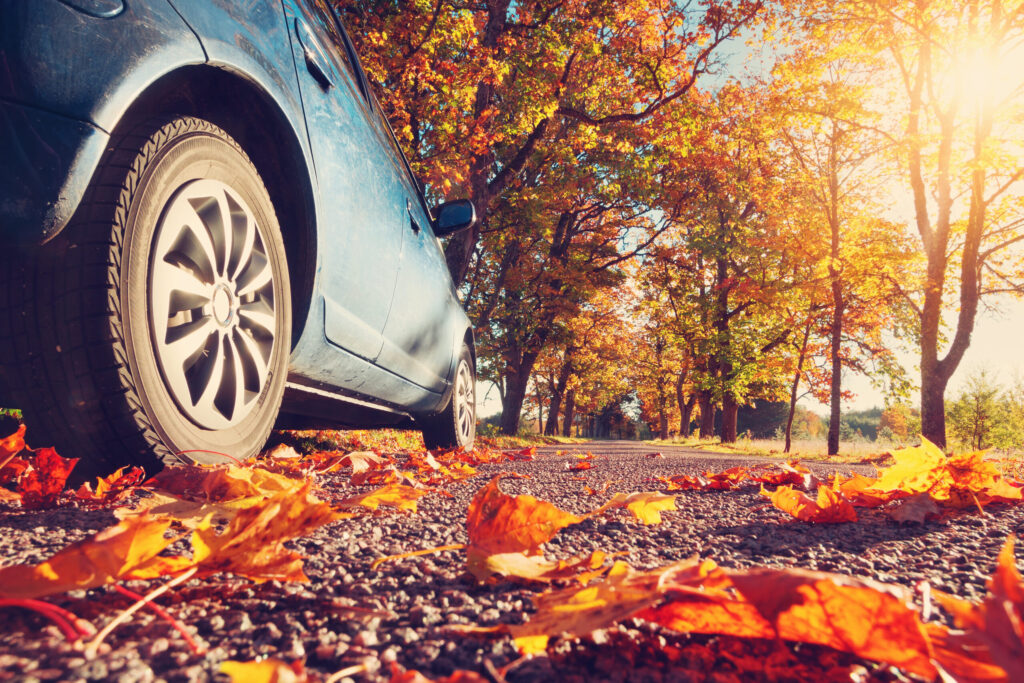As the warm days of summer transition into the crisp, cooler weather of autumn, driving conditions start to change significantly. The shorter daylight hours, increased rainfall, glare from the sun and falling leaves can make roads more hazardous. To stay safe, it’s essential to adjust both your driving habits and vehicle maintenance routines for the seasonal shift.
1. Prepare for Shorter Days and Reduced Visibility
With daylight fading earlier in the day, many drivers will find themselves commuting in the dark more often. This reduction in visibility makes it harder to spot hazards, pedestrians, or cyclists. To combat this:
- Check Your Lights: Ensure that all exterior lights—headlights, brake lights, indicators, and fog lights—are functioning correctly.
- Clean any dirt or grime off the lenses to maximize visibility.
- Adjust Your Driving Speed: At night or in dim lighting conditions, it’s vital to reduce speed to give yourself more time to react to unexpected situations.
- Watch for Glare: Autumn sun, particularly in the morning or evening, can create significant glare. Ensure your windshield is clean and free of smudges to reduce the impact of the sun’s rays.
2. Monitor Weather Conditions
Autumn often brings more rain, and roads can become slick with wet leaves or early morning frost, creating slippery surfaces that reduce tyre traction.
- Check Tyre Tread Depth: Adequate tire tread is essential for maintaining grip, especially on wet or slippery roads. The legal minimum tread depth is 1.6mm but you should consider replacing tires when the tread is less than 3mm.
- Inspect Tyre Pressure: Cold weather can cause tyre pressure to drop. Underinflated tires can affect handling and increase stopping distances. Regularly check your tyre pressure against the manufacturer’s recommendations.
- Be Aware of Hydroplaning: When roads are wet, hydroplaning—where your tyres lose contact with the road surface and skid—becomes a greater risk. To prevent this, drive at slower speeds, avoid sharp turns, and ensure your tyres are properly inflated.
3. Clear Away Falling Leaves
- Falling leaves can create beautiful autumn scenery, but they also pose a hidden danger when they collect on the road. Wet leaves can be as slippery as ice, and when piled up, they can obscure road markings or hide potholes.
- Remove Leaves from Your Vehicle: Leaves can accumulate around your windshield and wiper blades, reducing visibility. Before starting your journey, clear any leaves off your vehicle, particularly around the windshield and air intake vents.
- Drive Cautiously Around Leaf-Covered Areas: If you see a patch of road covered in leaves, slow down and avoid sudden braking or sharp turns, as these can cause you to skid.
4. Ensure Heating and Defrosting Systems Are Working
Autumn mornings often bring fog and frosty windscreens. To ensure you can see clearly, test your vehicle’s heating and defrosting systems before the weather becomes too cold.
- Check Wiper Blades: Worn wiper blades are less effective at clearing rain and mist from the windshield. Replace them if they are cracked, stiff, or leave streaks.
- Use Anti-Fog Solutions: You can also apply an anti-fog solution to your windows to reduce fogging, which often occurs with temperature changes inside and outside the car.
5. Brake Checks and Fluid Top-Ups
Autumn roads can be challenging, and you’ll need to rely heavily on your brakes to maintain safe stopping distances. As part of your seasonal vehicle checks:
- Inspect Your Brakes: Listen for any unusual sounds, such as grinding or squealing, which can indicate worn brake pads. It’s also a good idea to have a professional check your brake fluid level and brake performance.
- Top Off Essential Fluids: Make sure your vehicle’s oil, coolant, windshield washer fluid, and antifreeze levels are sufficient. Colder weather demands more from your engine, and having the right fluids helps it run smoothly.
Conclusion
Autumn driving comes with unique challenges, from reduced daylight to slippery roads. By making a few adjustments to your driving habits and performing routine vehicle checks, you can ensure a safer driving experience through this beautiful, if, unpredictable season.



